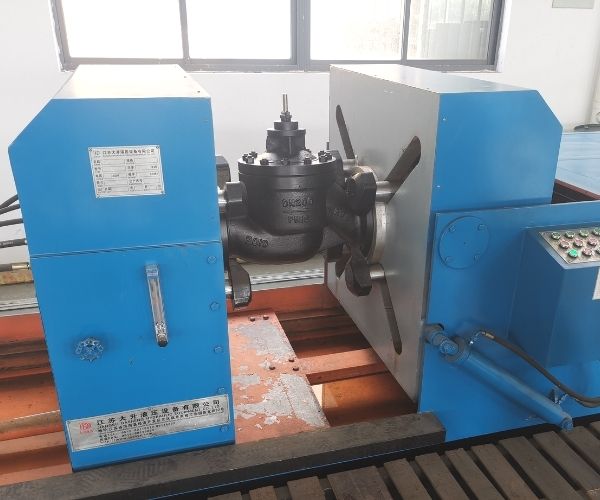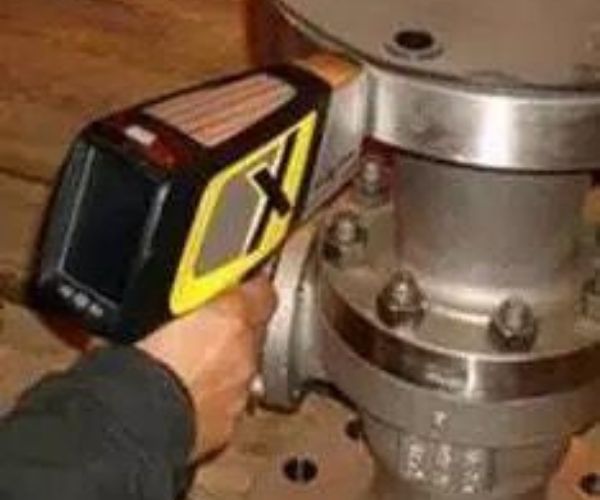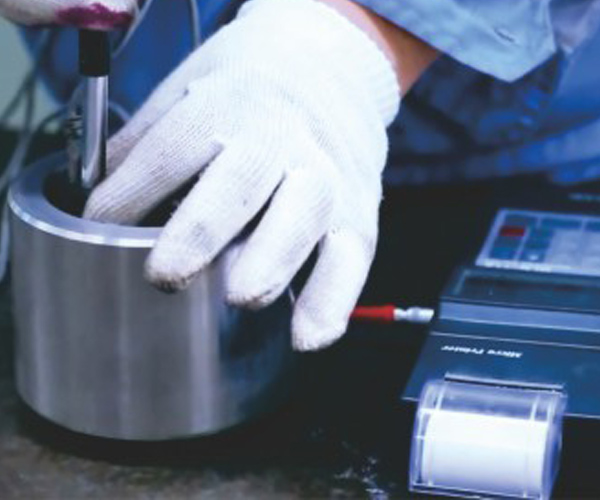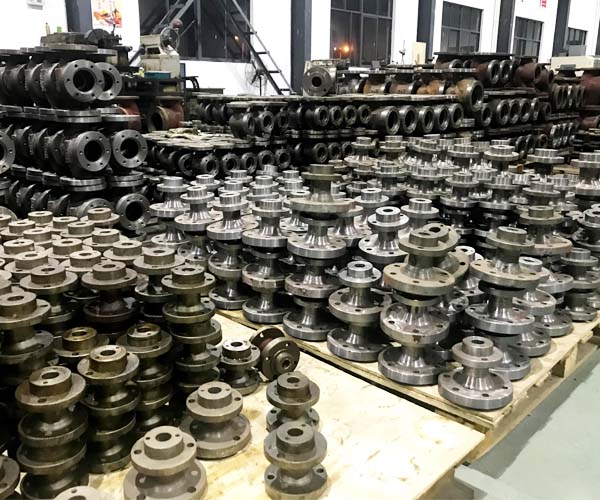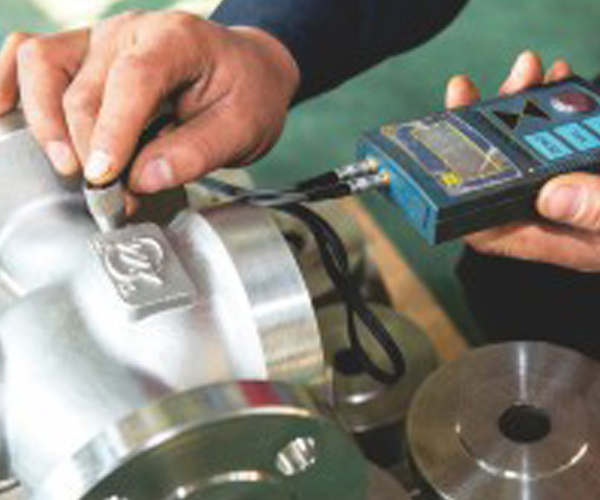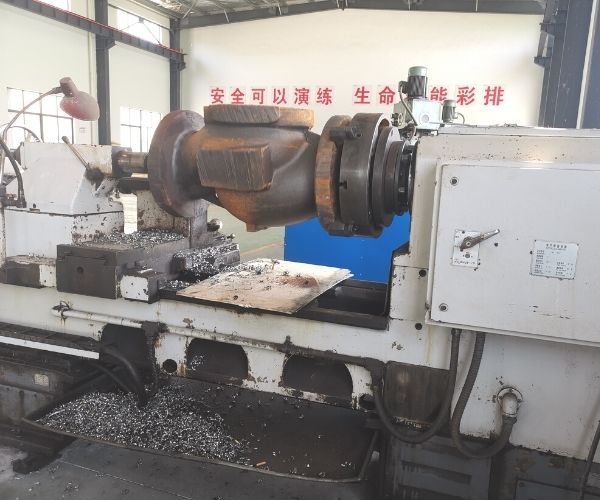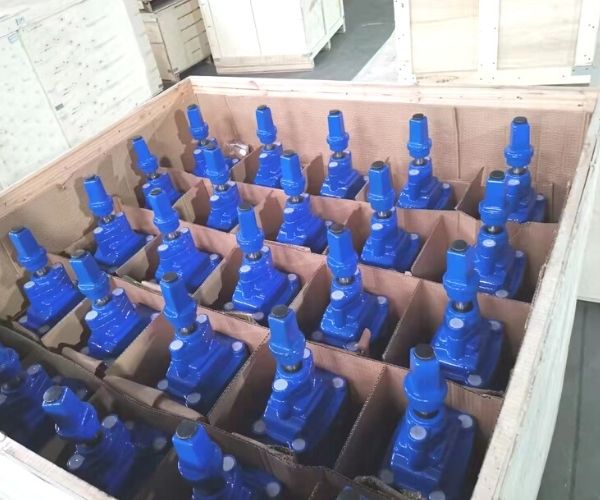Professional Stainless Steel Valve Manufacturer
BCST stainless steel valve are High-pressure resistance, designed to be able to sustain pressure without damage. They do not have any issues operating in very hot or icy conditions.
- Extremely reliable and robust,
- Free from corrosion, it is not prone to rust.
- No leaking under extreme temperature conditions.
- Long service life.
Get in Touch with Us
A Reliable Stainless Steel Valve Supplier In China
BCST stainless steel valves are generally used for abrasive media, such as pharmaceuticals, oils, liquid metal, and radiating media, controlling water for irrigation, residential uses, military and transport sector, and industrial uses for controlling processes. For long service life, good rust resistance, environmental protection, stainless steel valves have been widely applied in industry. BCST stainless steel valves are one of the valve products essential for pipes.
If you would love to purchase a high-quality stainless steel valve, don’t hesitate to get in touch with us
BCST - A Top Rated Stainless Steel Valve Suppliers In China
If your company calls for stainless steel valves, BCST Group can assist you. With 22 years of valve production and exporting experience, BCST will offer the one-stop answer in your projects.
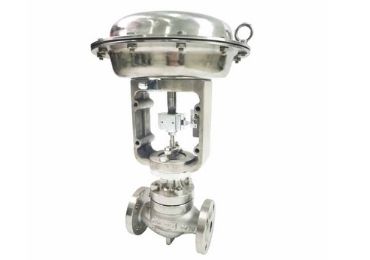
Full Stainless Steel Control Valve
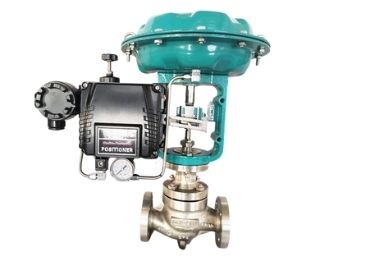
Stainless Steel Body Control Valve
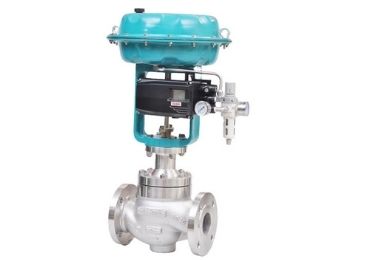
Stainless Steel Globe Control Valve
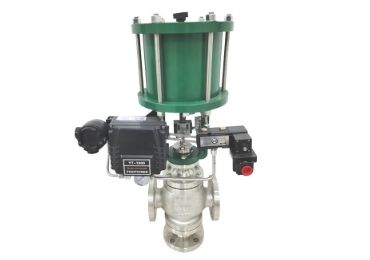
Stainless Steel Three way Control Valve
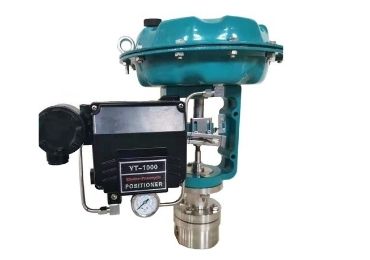
Stainless Steel Micro Flow Control Valve
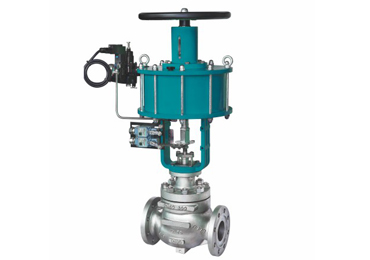
Stainless Steel On-off Valve
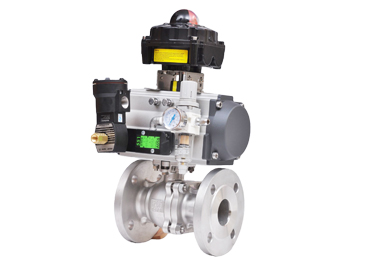
Pneumatic Onoff Ball Valve
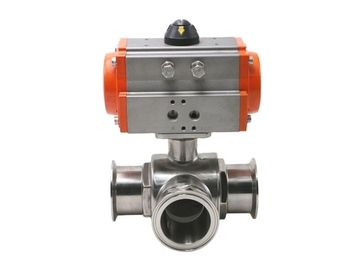
Stainless Steel Sanitary Ball Valve
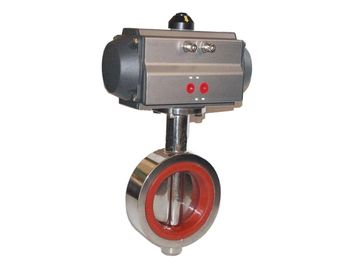
Stainless Steel Pneumatic Butterfly Valve
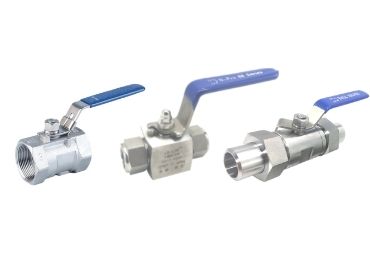
Stainless Steel Ball Valve
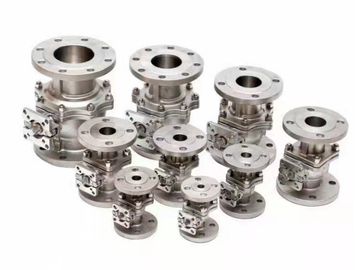
Stainless Steel Manual Ball Valve
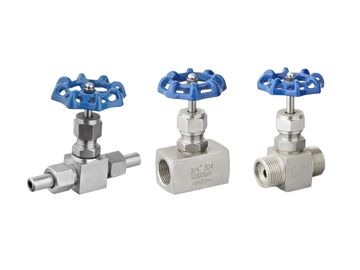
Stainless Steel Needle Valve
Your Export for Stainless Steel Valve from China
Each stainless steel valve is examined and collaborated through the manufacturing line making sure outstanding quality with entire test certificates. We have ATEX, SIL2, CE approval, in addition to explosion-proof certificates. We provide services across the world. So irrespective of wherein your company is located, we can help you.
Our technology and professional technical team will aid you and guide you at some point of version selection, debugging, and installation.

BCST Stainless Steel Valve Quality Control
Get the Latest Catalogue Now!
Why Purchase The Pneumatic Valve From BCST
Stainless Steel Valve -FAQ
What are stainless steel valve and their features?
The stainless steel valve is highly resistant and designed to handle pressure without causing any damage. You won’t face any issues while using the stainless steel valve in extreme icy or hot conditions.
Features of the stainless steel valve:
- You can rely on the stainless steel valve to a large extent, and it is also robust.
- There is no corrosion and rusting in the stainless steel valve
- Even you won’t face any leakages while using the stainless steel valve at excessive temperature
- The stainless steel valve has a long life for servicing.
Where can you use the stainless steel valve?
Generally, you can use the stainless steel valve for the abrasive medium, including oils, pharmaceuticals, liquid metal, and water control for irrigation purposes. Even stainless steel is used in different sectors, including transport, military, and industrial sectors, to control the processes. Due to the characteristic of good resistance and protecting the environment, the industries are using the stainless steel valve and necessary products in the pipe.
Who are the manufacturers of the stainless steel valve?
The top manufacturers of the stainless steel valve are the UK, India, China, and Germany. There is a large number of companies in China that are serving the industries along with the stainless steel valve. Among all of them, BCST is the leading one. They inspect every stainless steel valve and keep collaborating with the manufacturing team to deliver high-quality outcomes. The stainless steel valve at the BCST is available along with the testing certificates and received approval from the CE, ATEX, and SIL2. No matter where you are, the team of BCST will assist you regarding the stainless steel valve.
What are the tips for maintaining the stainless steel valve?
Cleaning the stainless steel valve regularly:
You may not get any benefit from cleaning the stainless steel valve. But, removing the dirt can start accumulating on the stainless steel valve. No remaining in the stainless steel valve helps turn it quickly and doesn’t cause any jamming.
Determine whether there is a need for the lubrication or not:
Depending on the design of the stainless steel valve, there can be a requirement for lubrication. Without any lubrication, the friction can cause difficulty turning the stainless steel valve and damage it. Whenever you apply lubrication to the stainless steel valve, use the lubricant suggested by the manufacturer of the stainless steel valve. Otherwise, the lubricant starts degrading and causes friction. The residue can also be left behind, which can decrease the performance of the stainless steel valve.
Checking the valves for leakages:
The leakages are a severe issue in the stainless steel valve that can be dangerous for hazardous substances. It can be due to the failed seal, so the better approach is to replace the stainless steel valve instead of changing the seal. Mostly, this is due to the damage that may occur inside the stainless steel valve that causes the leakage of the fluids.
Replacing the stainless steel valve if they are corroding:
Most people assumed that stainless steel is resistant to corrosion. But there is the possibility of its corroding along with time. It happens mainly when there is insufficient chromium oxide present. It occurs when acidic substances start appearing on the stainless steel valve. It has an impact on the coating of corrosion resistance. If the signs of corrosion are visible, replace the stainless steel valve as early as possible, as this is also weakening the stainless steel valve. For storing the stainless steel valve, you must keep them in a climate control region to limit the moisture the stainless steel valve may experience during the storage.
What are the benefits of using the stainless steel valve?
Below are the benefits offered by the stainless steel valve that is precisely dependent on your requirements.
· Versatility:
The stainless steel valve is versatile and suitable for various applications. It is also applicable for various ranges of temperatures. It means that the working of the stainless steel valve is dependent on the very cold or very hot temperatures. The stainless steel material can handle different temperatures, making it more versatile than other materials like plastic or brass.
· Very hard:
The priority of the stainless steel valve is much more than other materials. It is because stainless steel is a tough metal. It makes the valve stronger and difficult to damage. The stainless steel valve is famous for its strength, hardness, and resistance to leakages; the stainless steel valve is vital, so it can also handle high pressures. In high-pressure scenarios, the stainless steel valve is the right choice as there is no compromising on the reliability of the stainless steel valve.
· Resistant to corrosion:
Mostly, the use of the valves is in moist surroundings. Due to the moisture, the corrosion starts to begin on the metal. It has an impact on the operation of the valve but luckily not on the stainless steel valve. The resistance of the stainless steel valve is longer compared to other valves. Although, the stainless steel valve is expensive as compared to others. But this investment is worthy of the long lifespan of the stainless steel valve.
What are the actual reasons for rusting the stainless steel valve?
Whether your stainless steel valve gets rusty or not, it is deeply related to the operating surroundings.
There are external and internal factors that become the cause of rusting on the stainless steel valve. Take a look at the following reasons that can be the cause of rusting of the stainless steel valve:
- The rusting of the stainless steel valve is quite normal if the manufacturer hasn’t applied anti-rusting treatment on it and does not use the right technology during the production.
- Sometimes the stainless steel valve manufactureruses low-quality stainless steel that may cause rusting. So, it is better to use high-quality stainless steel to avoid rusting.
- In some cases, the stainless steel valve uses harsh surroundings like heavy exposure to the rain or sunlight. Even the contact with alkaline or acidic substances can cause rusting on the stainless steel valve.
What are the working and physical specifications of the stainless steel valve?
Range of pressure | From the atmosphere to less than 1*10power-8 mbar |
Mounting position of the stainless steel valve | You can mount the stainless steel valve in any position and also seal it against the atmospheric pressure at the either port |
Leakage rate | Less than the 1*10power-9std/cc second |
Materials | · Valve body: 304L stainless steel · Bellows: AM-350 · Bellows flange: 304 stainless steel · Seal plate: 304 stainless steel · Bonnet gasket: Viton (V 747) · O-rings: Viton (V 747) |
Servicing life | Minimum 1.5 million cycles |
Bake ability | · Valve opening: 200 degrees Celsius · Valve closing: 150 degrees Celsius · Along with the position indicator: (A/O as an option) 70 degrees Celsius · Along with the solenoid valve: (A/O as an option) 60 degrees Celsius |
Conductivity | · ¾” right angle valve: 6 liters/sec · ¾” in-line valve: 5 liter/sec · 1” right angle valve: 15 liters/sec · 1” inline-valve: 13 liters/sec · 1.5” right-angle valve: 48 liters/sec · 1.5” in-line valve: 44 liters/sec |
How to install the stainless steel valve?
Before installing and maintaining the stainless steel valve on a daily basis, you need to check the models carefully, along with the specifications of the stainless steel valve. They need to be aligned whose association needs to be along with the design of the stainless steel valve. You must check the stainless steel valve fulfills the requirements depending on the type of the stainless steel valve and instructions provided by the factory. When uplifting the stainless steel valve, you must tie the rope with the flange joint. It is between the body of the stainless steel valve and bonnet. You don’t need to tie from the handwheel as it can cause damage to the stem. While installing the stainless steel valve in the horizontal pipeline, keep the stem of the stainless steel valve in a vertically upward direction. Never install the stem of the stainless steel valve in a downward direction. When installing the stainless steel valve, the mode of forced connection for raw and hard pull doesn’t need t to be adopted. It prevents the stainless steel valve from damage that can be because by the irregular forces. Never install the stainless steel valve’s open stem gate in underground web areas so the stem is prevented from corrosion.
How do stainless steel and brass valves differ from each other?
Pros and cons of using the stainless steel valve:
The stainless steel material is popular for its durability and longer lifespan in different industries. Some people consider stainless steel as the better choice when compared to brass material. Here, check the pros and cons of the stainless steel valve so you can make the right choice:
Pros:
The stainless steel valve is superior to the brass valve in some factors, including pressure ratings, temperature tolerance, and performance like other special metals, such as copper, ductile iron, and cast iron. Because of the highly corrosive-resistant material, the stainless steel valve is suitable for marine water and commercial beverage systems. Mostly, a particular preference is for the stainless steel ball valves. There are multiple grades of stainless steel available, like SS316 and SS304. The stainless steel 36 is always far better than the stainless steel 304. Because it has a high content of Nickel which makes it resistant to corrosion, the proper selection of the stainless steel valve can help improve the system’s performance. Additional benefits of using the stainless steel valve are as follows:
- The low cost of maintenance
- The purity of maintaining the substances is in contact with the components of the stainless steel valve
Cons:
There are no proper disadvantages of using the stainless steel valve. You need to select the suitable option according to your applications, whether it is residential or commercial. The price of the SS304 is comparatively higher than the brass. Apart from other materials, the weight of the stainless steel is more, so it can be an essential factor in your project. So, be careful regarding the calculations.
Pros and cons of using the brass valve:
Mainly, people select the brass valve for the residential plumbing system. Even the marine applications and petroleum industries prefer to use it because of its durability and highly resistant to corrosion. Below take a look at the pros and cons of the brass valve:
Pros:
There are two forms of the brass valve: no-lead and lead options. Of course, your selection will be no-lead if you want a brass valve for the drinking water system. The main advantage of using the brass valve is its availability in economical pricing. Apart from being at a low price, it is not inferior to other materials.
Cons:
The brass valve gets corrodes quickly when compared to the stainless steel valve. It is not a good choice in the surroundings where valve leakages like valves in the salty water. It is essential to renovate or repair the brass valve to plumb the water. So, it is better t think multiple times before using the brass valve. The lead release from the brass is directly linked to the contents of the Zinc. It means that the more Zinc content in the brass valve, the more Lead it will release.
The performance of both valves is suitable according to the situation. So, go through the pros and cons of stainless steel and brass valves. Check all the requirements very carefully and select anyone of them.


